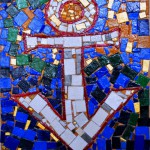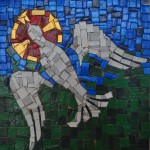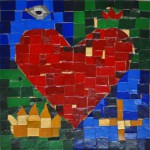Worship at Church of Our Savior is Saviour is central to who we are and to our hope of who we might become. We believe deeply that liturgy belongs to lay people, guided by the leadership and teaching of the ordained clergy, as the body of Christ. In both worship and fellowship, our parishioners and priest deliberately explore and find a variety of ways to express our praise for God, thanksgiving for the many blessings of creation, and love of our neighbor.
Progressive Liturgy, Strong Traditional Roots
 We have an active liturgy committee comprised of clergy, lay people, the music director, and seminarians. Our Eucharistic prayer, Prayers of the People, and service music change each liturgical season to reflect themes in the church year. In our use of The Book of Common Prayer and the 1982 Hymnal, we recognize the comforting, healing, and even mystical power of the beautiful, well-known Christian traditions that have developed over centuries. Yet we incorporate portions from prayer books of other traditions within the Anglican Communion and from hymnals like Wonder, Love, and Praise. We realize that they express powerful concepts from other cultures that may allow the currents of “tradition” to flow within us in new, more progressive and lively ways, refreshing our thinking and our hearts.
We have an active liturgy committee comprised of clergy, lay people, the music director, and seminarians. Our Eucharistic prayer, Prayers of the People, and service music change each liturgical season to reflect themes in the church year. In our use of The Book of Common Prayer and the 1982 Hymnal, we recognize the comforting, healing, and even mystical power of the beautiful, well-known Christian traditions that have developed over centuries. Yet we incorporate portions from prayer books of other traditions within the Anglican Communion and from hymnals like Wonder, Love, and Praise. We realize that they express powerful concepts from other cultures that may allow the currents of “tradition” to flow within us in new, more progressive and lively ways, refreshing our thinking and our hearts.
Architecturally and liturgically, our progressive church lives literally within a traditional framework. The long, narrow interior of our simple church building can—like tradition itself— seem to limit our wish for more-expansive views. Our congregation, however, accepts the challenge of testing tradition against new realities head on. Our worship not only reflects our beliefs about God and our fellowship with one another, it also projects them visually, spatially, and musically, sometimes in quiet ceremonies and often in joyful celebrations.
Visual and Spatial Awareness
 The visual arrangement of the objects we see and touch in our liturgies is not a mere backdrop to our worship but is integral to it. We express our beliefs visually by preparing the bread and wine for the liturgy, making the altar ready, and sometimes creating the paraments themselves. Our Altar Guild, made up of male and female parishioners, does this important work, thoughtfully planning for celebrations of Holy Days and often inviting the community for a morning of polishing, greening the church, or preparing flowers and candles for festival days. Members have found these quiet tasks contemplative and consoling. The art parishioners have created—displayed on our walls, hung from our rafters, built into our altar, sewn into our paraments, and manifested in sculptural pieces positioned in the nave and sanctuary—also physically manifest the theological ideas included in our liturgies. That art often provides themes for sermons and heightens our awareness of the special meaning of some services, such as our Liturgy for Loss.
The visual arrangement of the objects we see and touch in our liturgies is not a mere backdrop to our worship but is integral to it. We express our beliefs visually by preparing the bread and wine for the liturgy, making the altar ready, and sometimes creating the paraments themselves. Our Altar Guild, made up of male and female parishioners, does this important work, thoughtfully planning for celebrations of Holy Days and often inviting the community for a morning of polishing, greening the church, or preparing flowers and candles for festival days. Members have found these quiet tasks contemplative and consoling. The art parishioners have created—displayed on our walls, hung from our rafters, built into our altar, sewn into our paraments, and manifested in sculptural pieces positioned in the nave and sanctuary—also physically manifest the theological ideas included in our liturgies. That art often provides themes for sermons and heightens our awareness of the special meaning of some services, such as our Liturgy for Loss.
We worship as much in a circle as our rectangular nave permits. The altar, celebrant, and preacher are in our midst, and the altar itself is round. Commissioned by two church members in honor of people they love, the altar was built by Don Sutkus, a former parishioner who is a professional fine-furniture maker. The simplicity and shape of the new altar—a table for Christ’s gifts—symbolize our mission to sustain unending welcome, unity, and equality. This altar was consecrated by Bishop Gayle Harris at the 2006 Easter Vigil service. Our older, rectangular altar, which we keep under our large stained-glass window at the front of the church, is still important to us. It serves as an anchor for the more intimate, contemplative prayer space we create there for individuals and small groups. It reminds us of our history and the foundation of our current practices.
Inclusive Faith
 We embody our core belief in the importance of community and sharing, honoring the diversity in our midst and in the Church at large. Each celebration of the Eucharist begins with a statement that everyone, without exception, is welcome to receive the bread and wine in communion. Since we believe that God is expressed within people and in nature as well as through the gifts at the altar, we have placed our altar at the center, with the people facing both it and each other, and with our doors open to the outside world. We receive communion in successive circles, encompassing everyone from babies in arms to parishioners in their nineties. We greatly appreciate sermons that touch our hearts and lead to deeper thought and discussion. Sometimes, sermons have been interactive, a dialogue that draws out both our priest and our congregation to share ideas and experiences with one another.
We embody our core belief in the importance of community and sharing, honoring the diversity in our midst and in the Church at large. Each celebration of the Eucharist begins with a statement that everyone, without exception, is welcome to receive the bread and wine in communion. Since we believe that God is expressed within people and in nature as well as through the gifts at the altar, we have placed our altar at the center, with the people facing both it and each other, and with our doors open to the outside world. We receive communion in successive circles, encompassing everyone from babies in arms to parishioners in their nineties. We greatly appreciate sermons that touch our hearts and lead to deeper thought and discussion. Sometimes, sermons have been interactive, a dialogue that draws out both our priest and our congregation to share ideas and experiences with one another.
To many of us, the atmosphere of universal inclusion and welcome expressed in our liturgies is vital. Judging from comments in the self-study survey we conducted to help us create our parish profile, what people have experienced in our liturgies has involved much more than simple friendliness. It has meant acceptance, affirmation, even celebration of members of this parish who had previously experienced exclusion, invisibility, derision, and bigotry. For those previously labeled sinners, apostates, or dangerous questioners, it has meant an invitation to join in dialogue, to contribute talents and knowledge, to add spice, variety, and life to our community. Although at times this extended invitation troubles those of us who have not experienced exclusion recently, or surprises others who have always assumed that questioning is normal church behavior, we all are enormously enriched by the vitality and variety of our community and its embodiment in our liturgy.